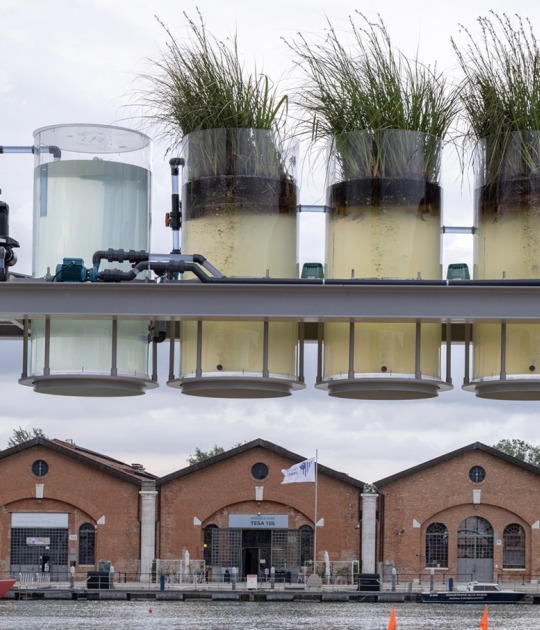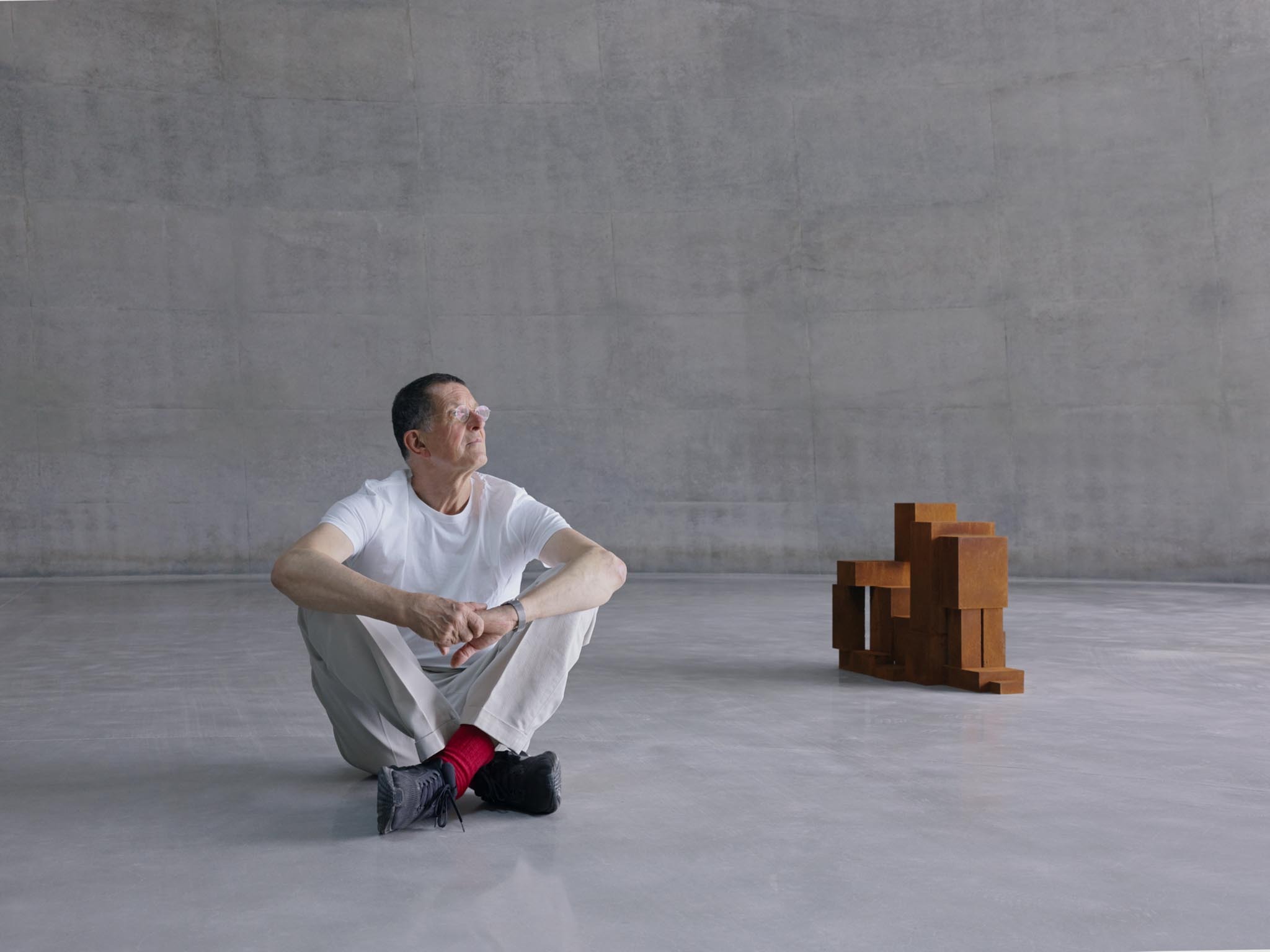
The large dome, designed by Tadao Ando, houses and gives meaning to Antony Gormley's work. The structure sits beneath a flower garden, creating a semi-subterranean exhibition space covered by a 25-meter-diameter concrete dome with a central oculus at the top, 7.2 meters high, flooding the interior with light, evoking the Pantheon in Rome. The zenithal light travels through the interior, illuminating the sculptures as the day progresses.
Visitors enter this large space sequentially. From the garden level, they reach an underground viewing room, where seven cast iron sculptures from Gormley's Blockworks series are displayed in different positions. Once inside, the interior connects to the exterior through panoramic glass. These figures—standing, crouching, sitting, and reclining—are intended to evoke psychological states that encourage contemplation.

Dome by Tadao Ando for Antony Gormley, Museum San. Photograph by MAG PR & Image.
On the other hand, the sculptor is exhibiting in the Museum San, also the work of the Japanese architect, a temporary exhibition in three galleries, ‘Drawing on Space’, where he will continue with the theme already dealt with in Tada Ando's dome, through sculptures and paintings. The limits of the human body, concerns, movement or the analysis of the human being are some of the themes dealt with in this exhibition. Space will be key to the understanding of the entire work, which is why the constructed dome will play a key role in the exhibition.
"The idea of this exhibition is to allow physical and imaginative space to come together. The works will activate space rather than occupy it, and explore the enclosures of architecture and the body as sensibility."
Antony Gormley, sculptor.

Dome by Tadao Ando for Antony Gormley, Museum San. Photograph by MAG PR & Image.
Project description by Antony Gormley, Tadao Ando
Seoul, Korea (June 20, 2025) - Museum SAN, a museum of the Hansol Cultural Foundation, presents Drawing on Space, a solo exhibition by British sculptor Antony Gormley (b. 1950), on view from June 20 to November 30, 2025. Spanning all three galleries of the Cheongjo Gallery, the exhibition features 48 works—including 7 sculptures, 40 drawings and prints, and a major installation—marking Gormley’s largest presentation in Korea to date.
Gormley’s practice redefines the language of sculpture through sustained investigation into the human body as a site of spatial perception and existential inquiry. Beginning with casts of his own body, his work has evolved into increasingly abstract forms that challenge fixed representation, inviting viewers to engage through physical movement, sensory awareness, and embodied experience. His sculptures function not as static objects but as catalysts for perceptual activation within space.

Coinciding with the exhibition is the unveiling of Ground, a newly conceived permanent installation created in collaboration with Japanese architect Tadao Ando (b. 1941), inaugurating the first permanent space dedicated exclusively to Gormley’s work worldwide. Conceived by Gormley and Ando as both a work of art and an experiential site, Ground embodies Museum SAN’s founding vision of integrating art, architecture, and nature. The new permanent space stands as a culmination of the museum’s ongoing commitment to creating experimental environments where sculpture, landscape, and architecture converge.
Drawing on Space: Reframing the Body within Space
The artist’s meditation on the human form, which began with casting his own body in plaster in the early years of his practice, has evolved into increasingly abstract structures that prompt a reconsideration of how the body exists within space. Rather than serving as static objects, Gormley’s works function as catalysts that activate the mind, senses, and awareness of viewers, inviting them to engage with both the artworks and surrounding space.
As Gormley states, “The idea of this exhibition is to allow physical and imaginative space to come together. The works will activate rather than occupy space, and explore the enclosures of architecture and the body as sensate.”
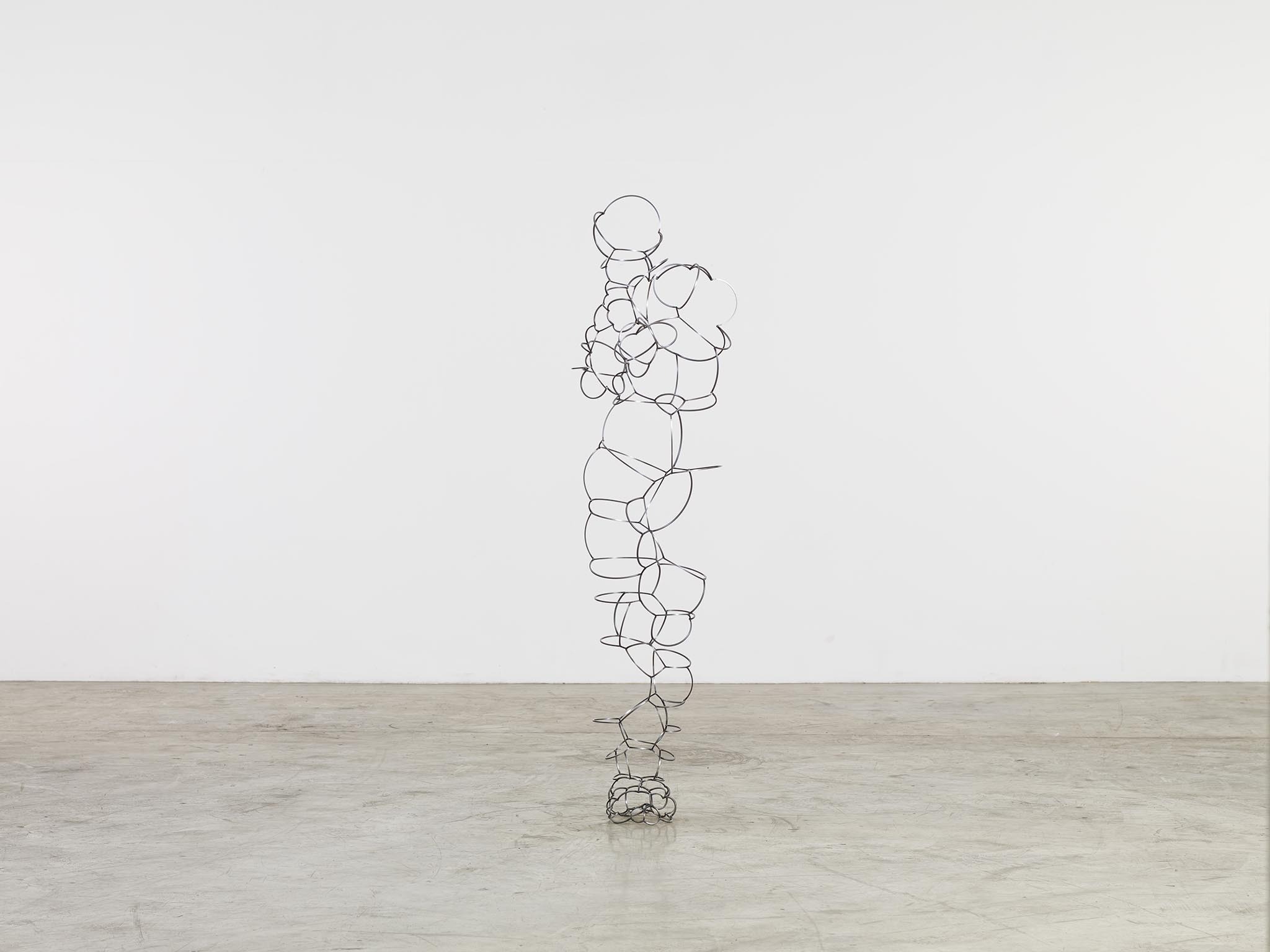
From the elusive bodies of Liminal Field to the spiraling forms of Orbit Field II and works on paper charting the interplay of light and darkness, Drawing on Space articulates Gormley’s investigation into the boundaries of embodiment and space.
The exhibition unfolds across three galleries. In Gallery 1, Liminal Field introduces seven sculptures that replace anatomical depiction with cellular geometries, evoking the fragile, shifting form of a bubble. These sculptures create a series of human spaces within space, prompting reflection on where the boundaries of the body begin and end.

Gallery 2 features a selection of drawings and prints developed alongside his sculptural explorations, offering insight into how his concerns extend into two-dimensional media. These works explore key themes that recur throughout his practice — the dynamic between body and architecture, the tension between mass and void, and the sensory registers of touch and sight.
The experience builds toward Gallery 3, where Orbit Field II serves as the exhibition’s centerpiece. Aluminum rings of varying scales intersect and animate the architectural volume—some anchored to walls, floor, and ceiling, others suspended freely. "The object nature of the work is less important than its ability to act as an instrument to encourage the proprioceptive awareness of the viewer," Gormley explains. As visitors duck, weave, and navigate through the structure, their movement becomes integral to the work itself.
Ground: A Meditative Confluence of Art, Architecture, and Landscape
Ground is a permanent architectural intervention jointly conceived by Gormley and Ando. Embedded beneath the museum’s flower garden, Ground comprises a 25-meter-wide subterranean dome rising 7.2 meters, with an oculus drawing natural light into the space. Evocative of the Pantheon, Ground merges constructed form with the surrounding Korean topography.
Visitors first descend from the garden level into an underground observation room, where seven cast-iron sculptures from Gormley’s Blockworks series are encountered through panoramic glazing. These standing, crouching, seated, and reclining figures evoke psychological states that prompt contemplation.
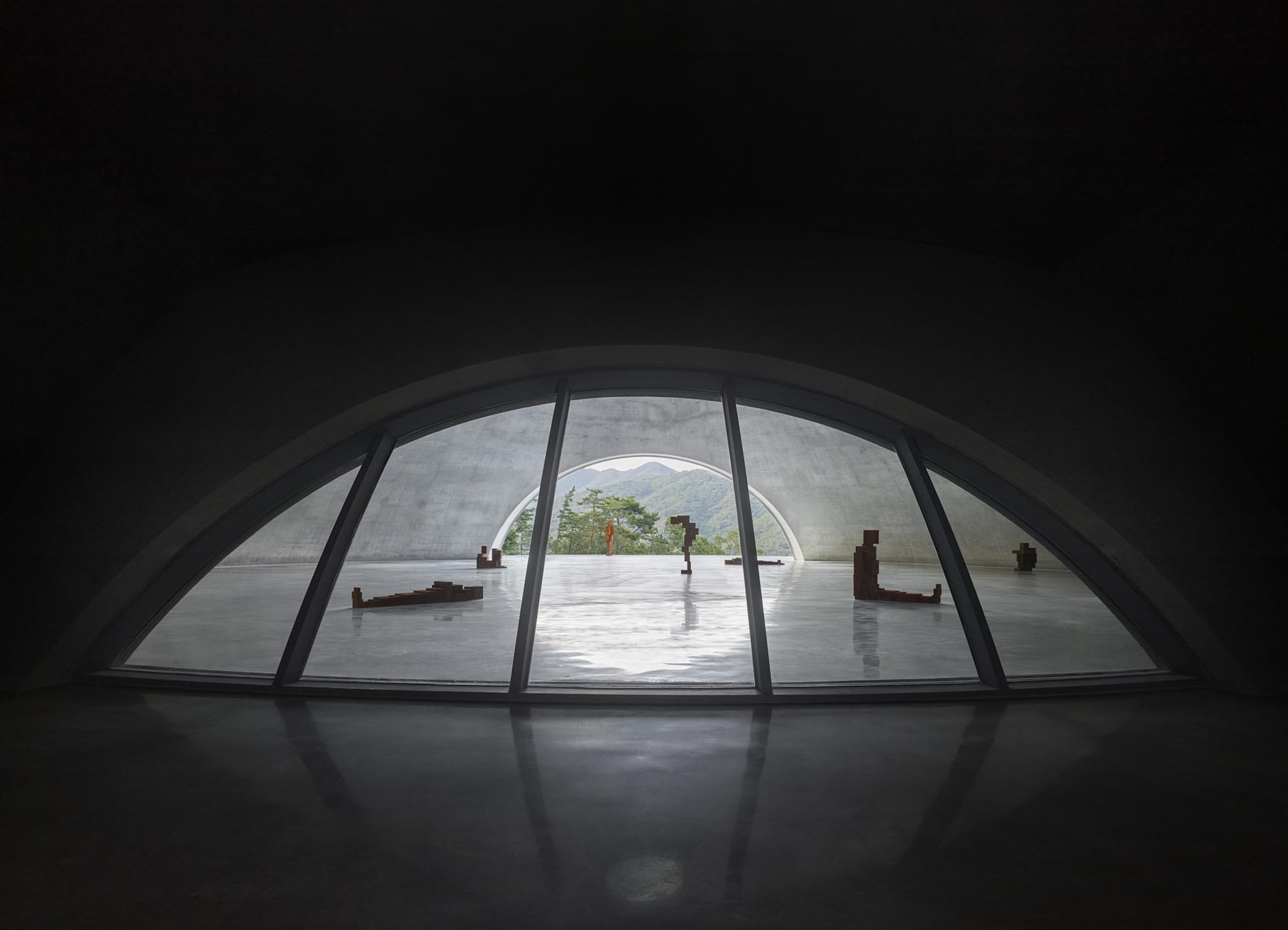
From there, visitors move into the central dome, engaging directly with the sculptures and becoming part of the spatial encounter. The experience extends into the landscape, where a solitary figure anchors the view toward the distant mountains, uniting sculpture, architecture, nature, and viewer in a singular moment.
Ground embodies Museum SAN’s commitment to expanding the museum experience beyond conventional white-cube exhibition formats. Transforming space, art, and nature into a singular experience, Ground culminates and embodies Museum SAN’s mission statement: Disconnect to connect. Since opening in 2013, Museum SAN has continually expanded its vision beyond the conventional gallery model, introducing unique architectural interventions such as the James Turrell Pavilion (2013), Meditation Hall (2019), and Space of Light (2023). With Ground, the museum further deepens this founding vision, inviting visitors to reconnect with the present moment through an immersive encounter with art, architecture, and nature.























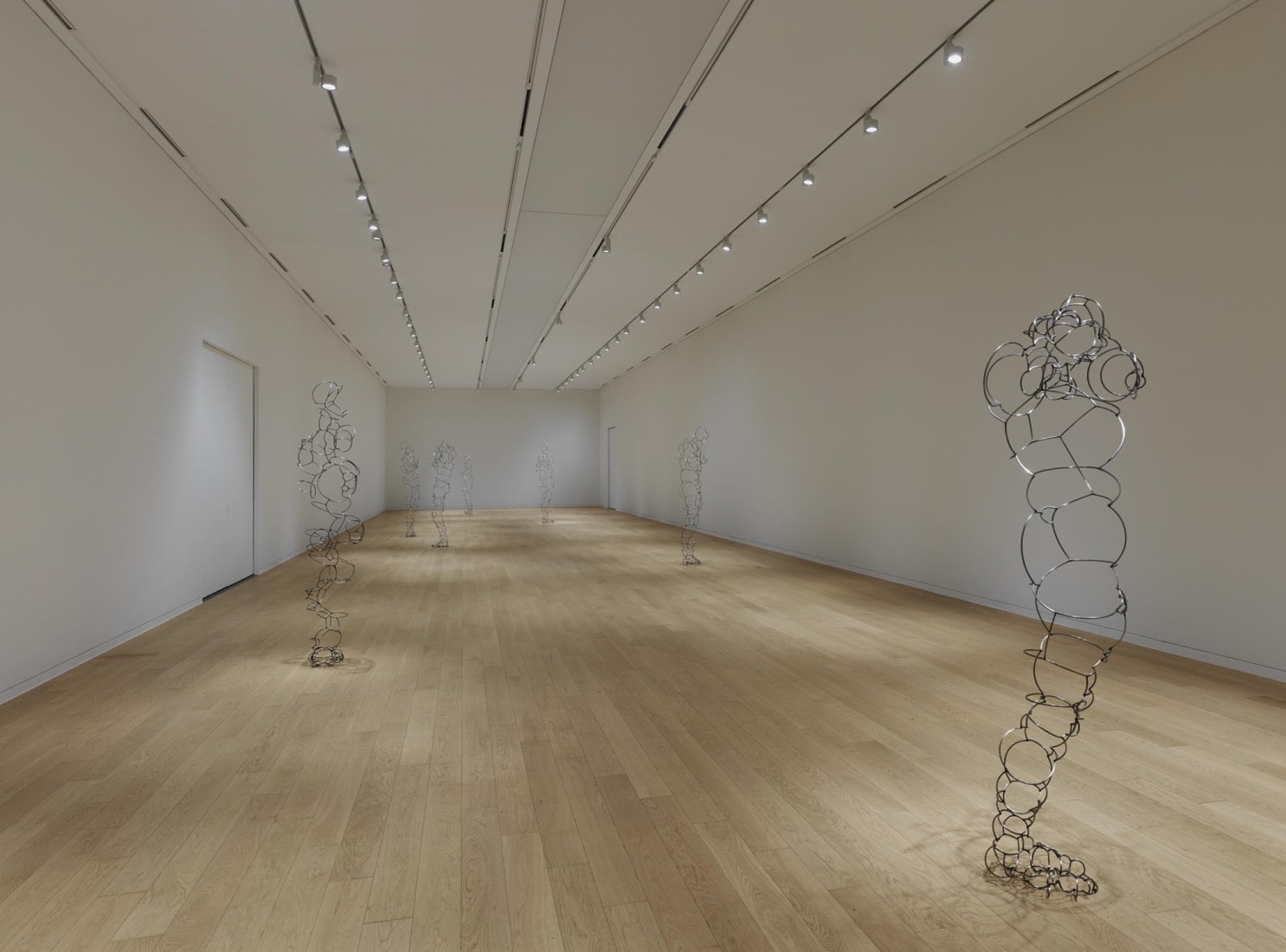























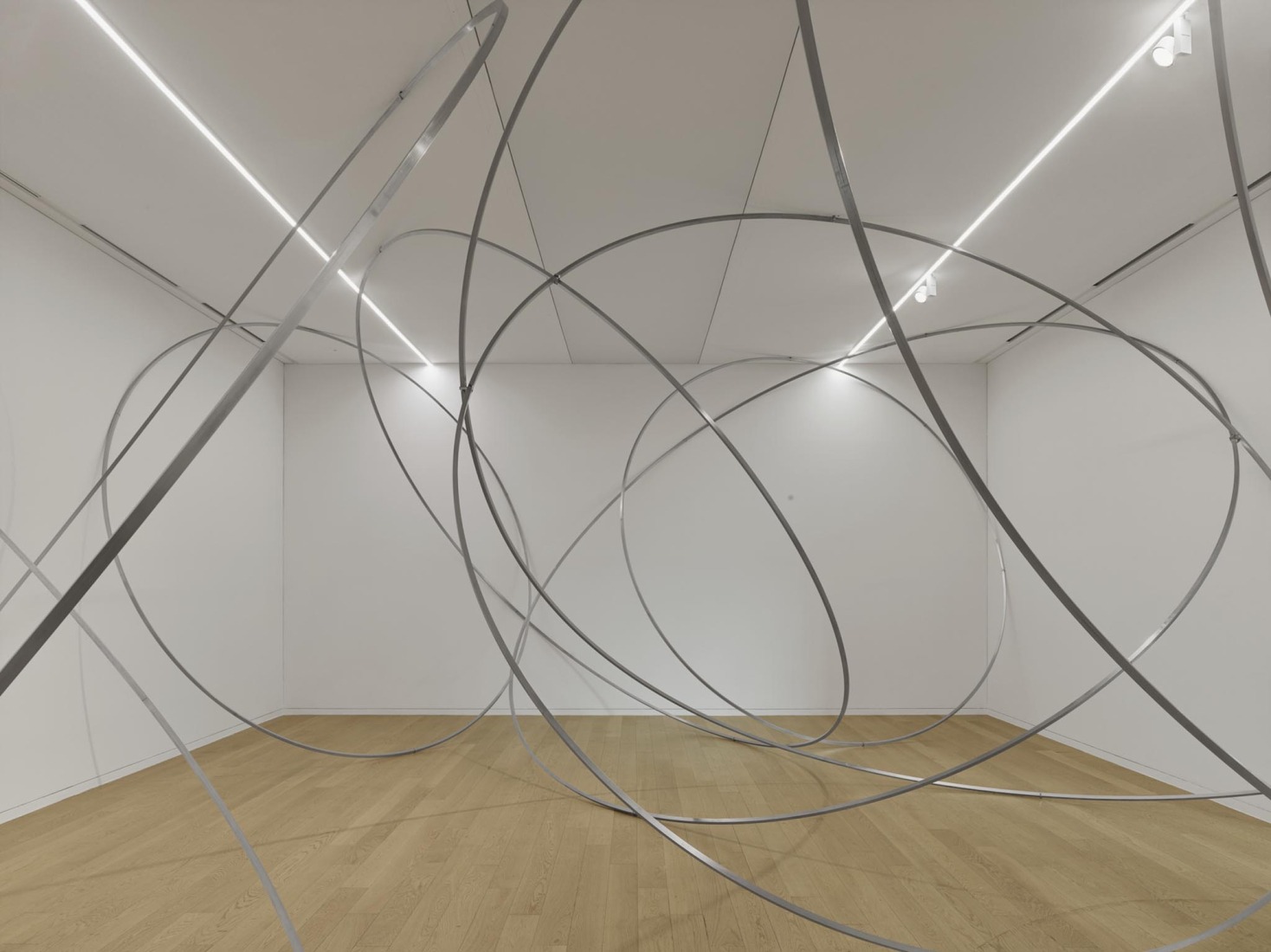


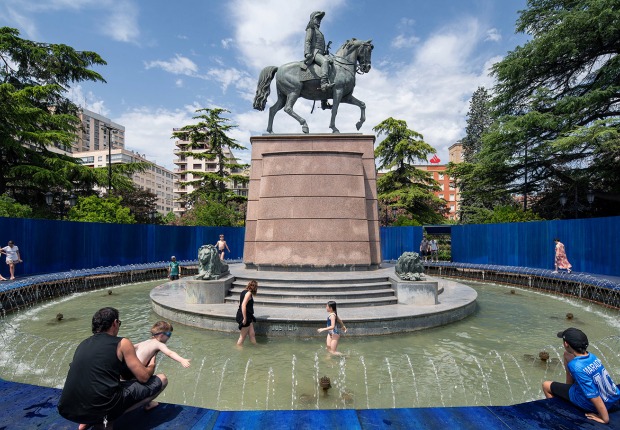
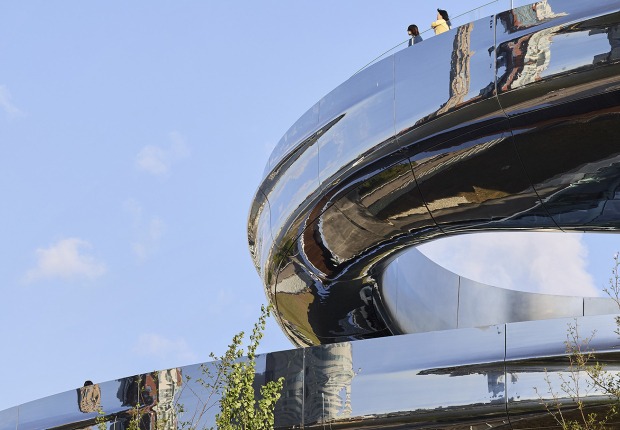
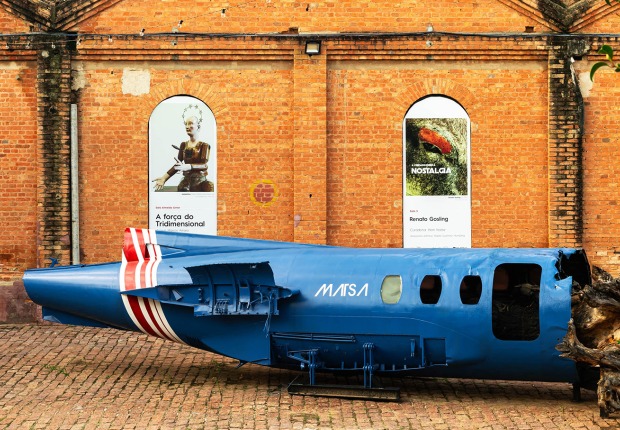


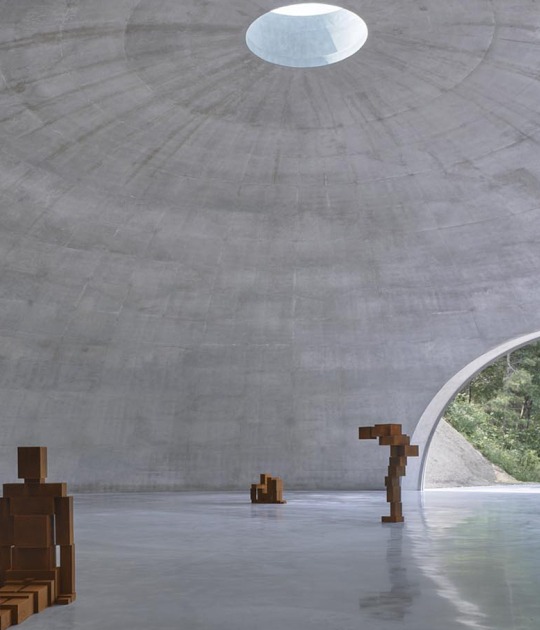


![Friedrich Kiesler, Endless House for Mary Sisler [shattered sketch sheet], New York and Florida, 1961, 21.5 x 33.4 cm, pencil on paper, mounted on cardboard. Courtesy by the Austrian Frederick and Lillian Kiesler Private Foundation, Vienna Friedrich Kiesler, Endless House for Mary Sisler [shattered sketch sheet], New York and Florida, 1961, 21.5 x 33.4 cm, pencil on paper, mounted on cardboard. Courtesy by the Austrian Frederick and Lillian Kiesler Private Foundation, Vienna](/sites/default/files/styles/mopis_home_news_category_slider_desktop/public/2025-05/metalocus_Fundacio%CC%81n-Frederick-Kiesler_03_p.jpg?h=3b4e7bc7&itok=kogQISVW)



